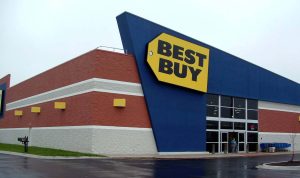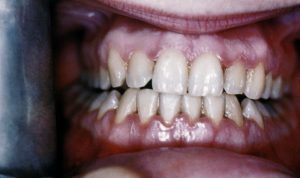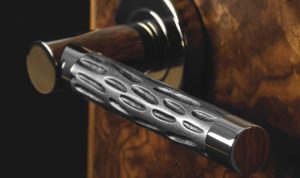The global automotive industry is a colossal machine, constantly evolving and demanding a steady supply of components to keep it running smoothly. From the smallest washer to the most sophisticated electronic system, automotive parts and accessories are at the heart of vehicle maintenance, repair, and personalization. This sector, encompassing both business-to-consumer (B2C) and business-to-business (B2B) transactions, represents a multi-billion dollar market ripe with opportunities for businesses that understand its dynamics.
Understanding the Automotive Parts & Accessories Ecosystem
Before delving into sales and transaction strategies, it’s crucial to grasp the diverse nature of the products involved. Automotive parts broadly fall into two categories:
- OEM (Original Equipment Manufacturer) Parts: These are identical to the parts installed in a vehicle when it was manufactured. They are typically sourced directly from the vehicle manufacturer or their authorized suppliers and are known for their quality, fit, and warranty.
- Aftermarket Parts: These are manufactured by companies other than the original vehicle manufacturer. They can range from direct replacements (often more affordable than OEM) to performance upgrades, aesthetic enhancements, and specialized accessories. The aftermarket itself is further segmented into:
- Replacement Parts: Critical for vehicle repair and maintenance (e.g., brake pads, oil filters, spark plugs).
- Collision Parts: Used for repairing accident damage (e.g., body panels, bumpers, headlights).
- Accessories: Items that enhance a vehicle’s functionality, aesthetics, or comfort (e.g., roof racks, floor mats, infotainment systems).
- Performance Parts: Designed to improve a vehicle’s power, handling, or braking capabilities (e.g., turbochargers, suspension kits, exhaust systems).
The Evolution of Automotive Parts Sales Channels
Historically, purchasing automotive parts often meant a trip to a local dealership, an independent auto parts store, or a mechanic. While these channels remain vital, the digital revolution has dramatically reshaped the landscape.
- Brick-and-Mortar Stores: These include national chains (e.g., AutoZone, O’Reilly Auto Parts in the US), independent retailers, and dealership parts departments. Their advantages lie in immediate availability, expert advice, and the ability for customers to physically inspect products.
- E-commerce Platforms: Online sales have exploded, driven by convenience, competitive pricing, and vast product selection. Platforms range from dedicated automotive parts websites (e.g., RockAuto, PartsGeek) to general marketplaces like Amazon and eBay, which have dedicated automotive sections.
- B2B Wholesalers and Distributors: These companies supply parts to repair shops, dealerships, and other businesses, often in bulk. Efficient logistics and strong relationships are key to success in this segment.
- Direct-to-Consumer (DTC) from Manufacturers: Some aftermarket manufacturers are now selling directly to end-users through their own websites, bypassing traditional retail channels.
Key Drivers of Sales and Transaction Volume
Several factors continuously fuel the demand for automotive parts and accessories:
- Aging Vehicle Fleets: As vehicles get older, they require more frequent repairs and replacement parts.
- DIY Culture: A significant segment of vehicle owners prefers to perform their own maintenance and repairs, driving demand for parts at retail.
- Vehicle Customization and Personalization: The desire to make vehicles unique, whether for performance, utility, or aesthetics, drives strong sales in the accessories and performance parts segments.
- Technological Advancements: New vehicle technologies often mean new, specialized parts and tools are required for repair and maintenance.
- Economic Factors: While recessions can sometimes dampen new car sales, they often lead to an increase in vehicle maintenance and repair, boosting aftermarket parts demand as consumers hold onto their existing vehicles longer.
Strategies for Successful Sales and Transactions
For businesses operating in this dynamic sector, effective strategies are paramount for growth and profitability.
- Robust E-commerce Presence: A user-friendly website with an extensive catalog, high-quality images, detailed descriptions, and accurate fitment information (e.g., year, make, model compatibility) is non-negotiable.
- SEO Optimization: Use relevant keywords (e.g., “Honda Civic brake pads,” “truck bed cover,” “performance exhaust”) to ensure high visibility in search engine results. Create helpful content like buying guides and DIY tutorials.
- Mobile Responsiveness: A significant portion of online shopping occurs on mobile devices.
- Secure Payment Gateways: Offer multiple, secure payment options to build customer trust.
- Efficient Inventory Management: Real-time inventory updates prevent stockouts and backorder issues, enhancing customer satisfaction.
- Competitive Pricing and Promotions: While price isn’t the only factor, it’s a significant one. Businesses must balance competitive pricing with maintaining healthy profit margins. Regular promotions, bundle deals, and loyalty programs can attract and retain customers.
- Exceptional Customer Service: Knowledgeable staff who can assist with part identification, technical questions, and installation advice are invaluable. Quick and hassle-free returns policies also build confidence.
- Effective Supply Chain and Logistics: Fast and reliable shipping is a major differentiator. Partnering with reputable logistics providers and optimizing warehousing operations are crucial. For B2B, just-in-time delivery can be a significant competitive advantage.
- Data Analytics and Market Research: Understanding purchasing patterns, popular products, seasonal trends, and emerging demands allows businesses to optimize inventory, marketing efforts, and product offerings.
- Build Trust and Authority: For technical products like automotive parts, establishing credibility is key. This can be achieved through:
- Expert Content: Blogs, videos, and guides on installation, maintenance, and product comparisons.
- Customer Reviews and Testimonials: Social proof is powerful. Encourage customers to leave reviews.
- Industry Certifications and Partnerships: Highlighting affiliations with reputable automotive organizations or brands.
- Leverage Social Media and Digital Marketing: Platforms like Facebook, Instagram, YouTube, and TikTok are excellent for showcasing products, running targeted ads, engaging with car enthusiasts, and building a community around your brand. Influencer marketing with automotive personalities can also be highly effective.
- Focus on Niche Markets (If Applicable): Specializing in a particular vehicle make (e.g., classic car parts), a specific product category (e.g., off-road accessories), or a performance segment can allow for deeper expertise and less competition.
- After-Sales Support: Providing support after the sale, such as troubleshooting assistance, warranty handling, and easy access to installation instructions, enhances the customer experience and fosters loyalty.
- Embrace Technology: Utilize technologies like AI for personalized recommendations, chatbots for instant customer support, and advanced search filters to improve the online shopping experience. Consider augmented reality (AR) tools that allow customers to visualize accessories on their vehicle before purchase.
The automotive parts and accessories market is robust and continually growing, driven by a global fleet of vehicles and the enduring desire of owners to maintain, repair, and enhance their cars, trucks, and motorcycles. Businesses that strategically navigate the online and offline sales channels, prioritize customer experience, and leverage data and technology will be well-positioned to drive significant growth and achieve lasting success in this exciting industry.







